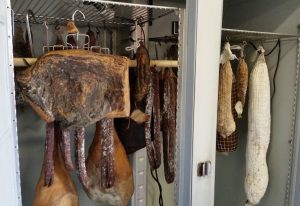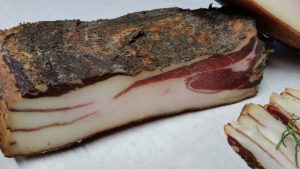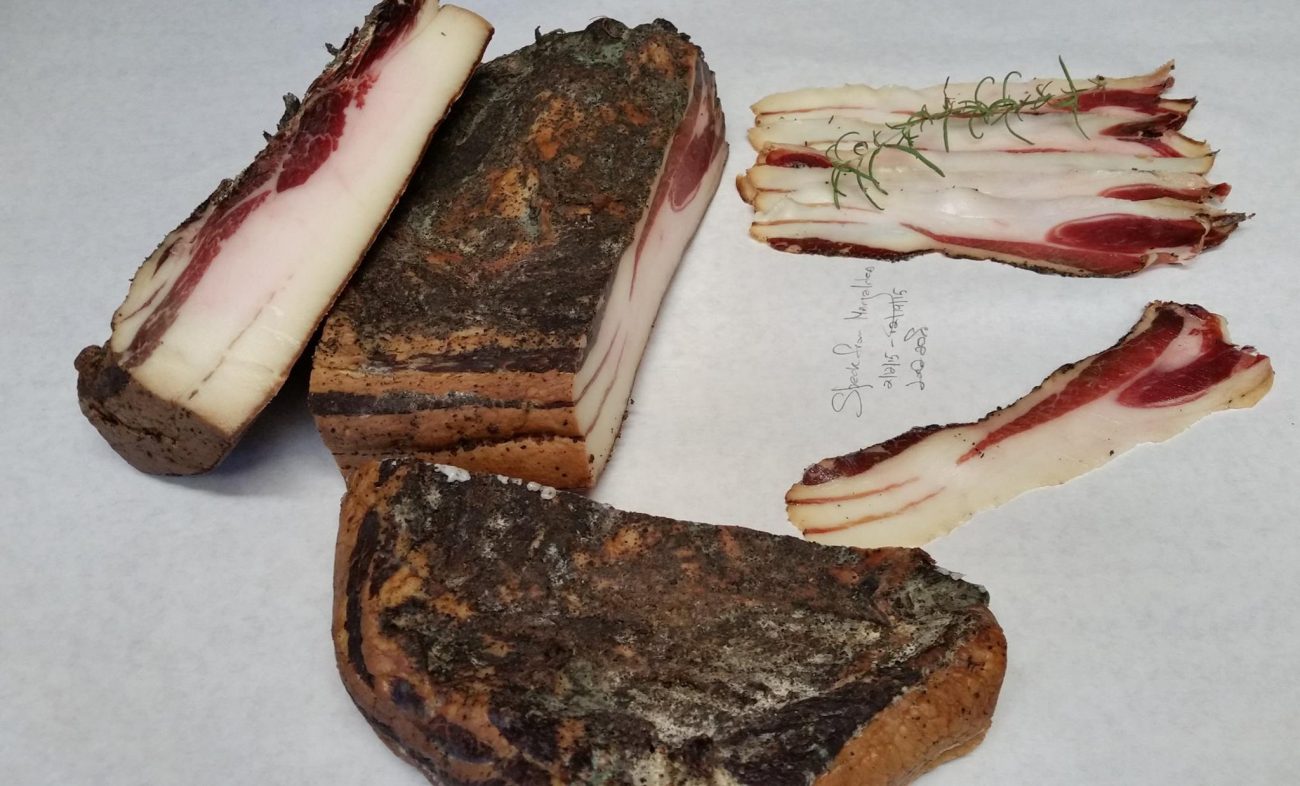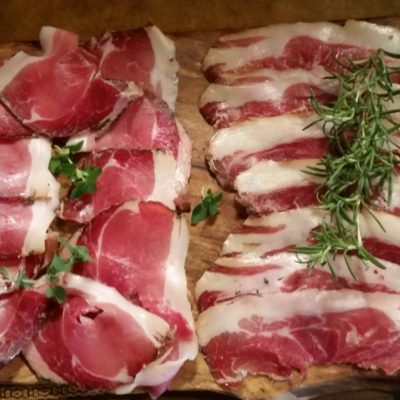Directions
The main task when working with magnificent starting material is simple. Don’t mess it up. Choose only spices that can highlight the quality of the meat, and choose them in moderation. As an example, take this speck from mangalitsa. The process is identical to the one, published earlier on this resource; it comes from the second shoulder of the same animal.
After the cut was prepared, the following spices were applied: BP – 0.5%, Juniper – 0.5%; Poive du Sichuan – 0.25%; Sea salt – 3%; cure#2 – 0.25%; some rosemary extract. After three weeks in vacuum under refrigeration, speck was washed, dried, dusted with BP and mentioned above Sichuan papers, cold-smoked for five days over pecan with hickory. After five month in the Curing Chamber, the weight loss came to 20%.

Prior slicing the speck from mangalitsa, I put it for around 20 -30 minutes in a freezer. At the room temperature and sliced thin, it melts in a matter of minutes. Kept under vacuum in refrigerator, such speck does not lose its qualities fast. It has been a year and four month since this particular speck went to the refrigerator. Some of it was consumed, nearly half still remains. There is not even hint of upcoming oxidation on the product. Artisans who work with mangalitsa have been claiming for a long time the fat from this breed is less prone for spoilage or, rather, it takes longer time. Recently, I’ve seen results of a Hungarian study that confirmed these observations and provided an explanation that extends my humble understanding of molecular biology. Hence, enjoy your mangalitsa judiciously and over time. My other advice for those of us who only occasionally are lucky to work with this breed: whether it’s speck or back-fat, cold-smoke it. Manga fat is something; but melting cold-smoked manga fat is a gold liquid.





 Русский
Русский





